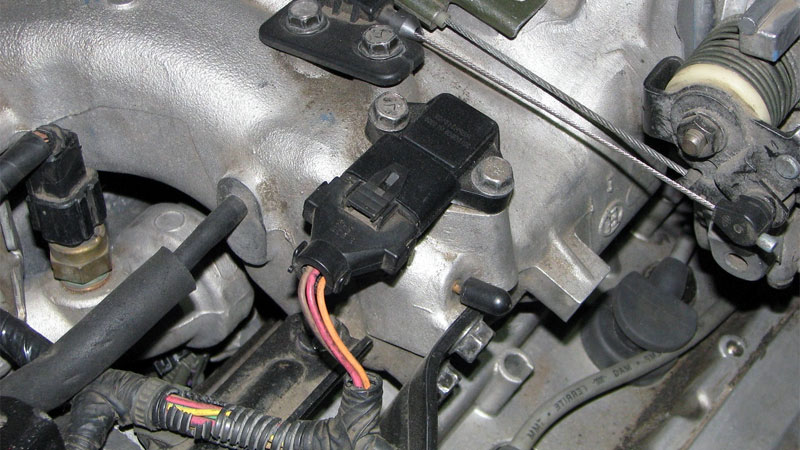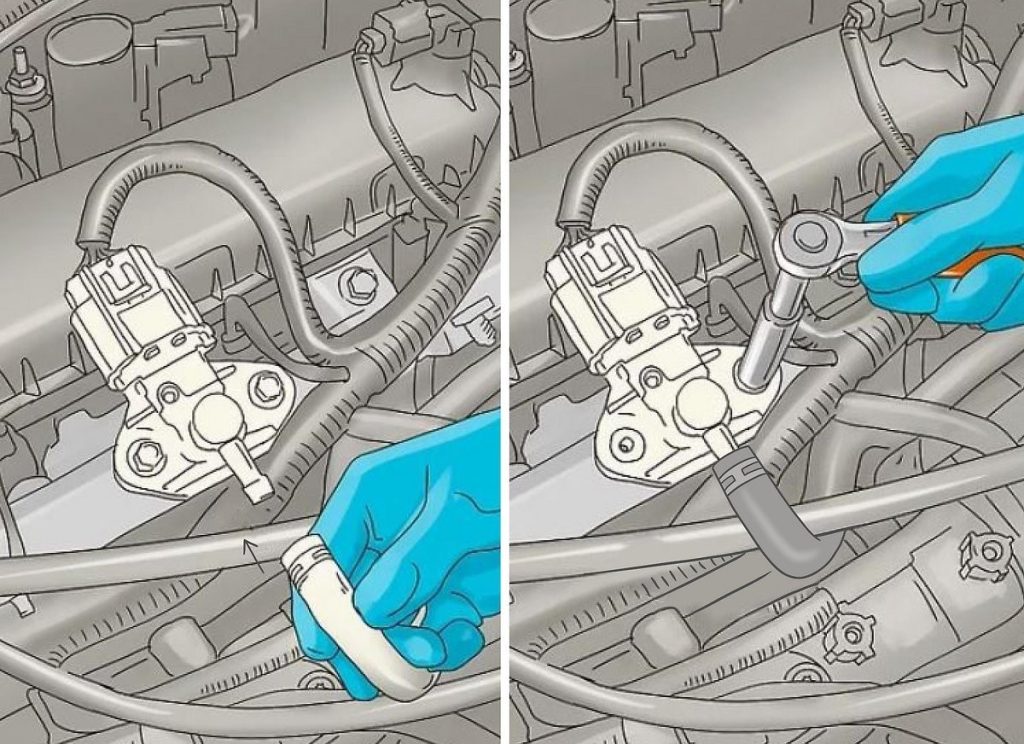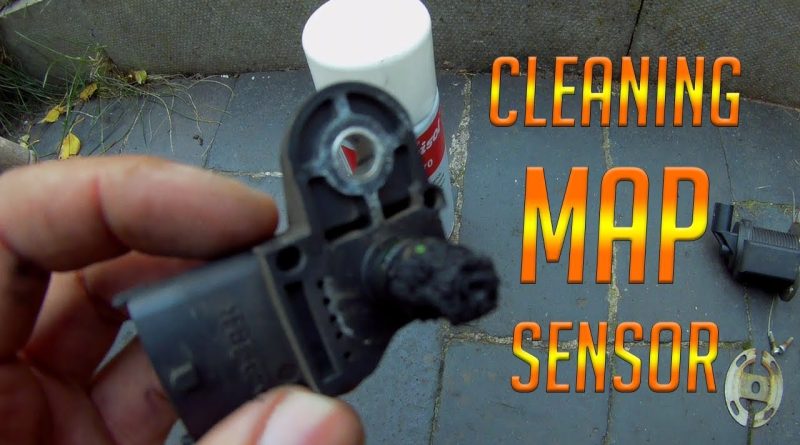The Secret to a Smooth Ride: Cleaning Your Map Sensor for Optimal Engine Health
A map sensor, short for manifold absolute pressure sensor, is a crucial component of a car’s engine management system. It plays a vital role in ensuring optimal engine performance by measuring the pressure inside the intake manifold and providing this information to the engine control unit (ECU). This data helps the ECU determine the correct air-fuel mixture and ignition timing for efficient combustion. A properly functioning map sensor is essential for a smooth ride, fuel efficiency, and overall engine health.
What is a Map Sensor and Why is it Important for Your Car’s Performance?
A map sensor is a small electronic device that measures the pressure inside the intake manifold of an engine. It works on the principle that as the engine sucks in air, the pressure inside the intake manifold changes. The map sensor detects these changes and converts them into an electrical signal that is sent to the ECU.
The ECU uses this information to calculate the correct amount of fuel to inject into the engine and adjust the ignition timing accordingly. This ensures that the engine runs smoothly and efficiently under various operating conditions. Without a properly functioning map sensor, the ECU would not have accurate data about the air pressure in the intake manifold, leading to poor engine performance, decreased fuel efficiency, and potential damage to the engine.
Signs of a Dirty Map Sensor and How it Affects Your Engine Health
A dirty map sensor can cause various symptoms that indicate its malfunctioning. Some common signs include rough idling, hesitation or stumbling during acceleration, poor fuel economy, and even stalling. These symptoms occur because a dirty map sensor cannot accurately measure the pressure inside the intake manifold, leading to incorrect calculations by the ECU.
When a map sensor becomes dirty or clogged with dirt, oil, or carbon deposits, it can affect engine health in several ways. Firstly, it can disrupt the air-fuel mixture ratio, causing an imbalance that leads to poor combustion and reduced power output. Secondly, it can affect the ignition timing, resulting in misfires and decreased engine efficiency. Lastly, a dirty map sensor can cause the engine to run too rich or too lean, leading to increased fuel consumption and higher emissions.
It is important to address a dirty map sensor promptly to prevent further damage to the engine and ensure optimal performance. Ignoring the symptoms and neglecting to clean the map sensor can lead to more severe issues, such as engine misfires, increased wear and tear on engine components, and even engine failure.
The Importance of Regular Maintenance and Cleaning of Your Map Sensor

Regular maintenance and cleaning of your map sensor are crucial for maintaining optimal engine performance and fuel efficiency. Over time, dirt, oil, and carbon deposits can accumulate on the sensor’s surface, affecting its ability to accurately measure the pressure inside the intake manifold. This can lead to a variety of performance issues and decreased fuel economy.
By regularly cleaning your map sensor, you can remove these deposits and ensure that it functions properly. This will allow the ECU to receive accurate data about the air pressure in the intake manifold, enabling it to make precise calculations for fuel injection and ignition timing. As a result, your engine will run smoothly, deliver optimal power output, and consume fuel more efficiently.
Regular maintenance and cleaning of your map sensor also help prevent potential damage to other engine components. When a map sensor is dirty or clogged, it can cause the engine to run too rich or too lean, which can lead to increased wear on the spark plugs, oxygen sensors, and catalytic converter. By keeping your map sensor clean, you can avoid these issues and extend the lifespan of these critical components.
Tools and Materials Needed to Clean Your Map Sensor
To clean your map sensor, you will need the following tools and materials:
- Cleaning solution: Use a specialized map sensor cleaner or electronic parts cleaner. Avoid using harsh chemicals or solvents that can damage the sensor.
- Soft-bristle brush: Use a small, soft-bristle brush to gently scrub the sensor’s surface and remove any dirt or deposits.
- Compressed air: Use compressed air to blow away any loose debris or particles from the sensor.
- Safety goggles and gloves: Wear safety goggles and gloves to protect your eyes and hands from any cleaning solution or debris.
Step-by-Step Guide to Cleaning Your Map Sensor
Follow these steps to clean your map sensor:
- Locate the map sensor: The map sensor is usually located on or near the intake manifold. Consult your vehicle’s manual or do some research to find its exact location.
- Disconnect the electrical connector: Carefully disconnect the electrical connector from the map sensor. Be gentle to avoid damaging the connector or wires.
- Remove the map sensor: Depending on your vehicle, you may need to remove some bolts or clips to take out the map sensor. Again, consult your vehicle’s manual for specific instructions.
- Spray the cleaning solution: Spray the cleaning solution onto the map sensor, focusing on the surface that comes into contact with the intake manifold. Be sure to follow the instructions on the cleaner’s label for best results.
- Gently scrub the sensor: Use a soft-bristle brush to gently scrub the surface of the map sensor, removing any dirt or deposits. Be careful not to apply too much pressure or use abrasive materials that can damage the sensor.
- Rinse with clean water (optional): If recommended by the cleaning solution manufacturer, rinse the map sensor with clean water to remove any residue from the cleaning process. Be sure to dry it thoroughly before reinstalling.
- Blow away debris with compressed air: Use compressed air to blow away any loose debris or particles from the map sensor. This will ensure that it is completely clean before reinstalling.
- Reinstall the map sensor: Carefully reinstall the map sensor, making sure it is securely in place. Reconnect the electrical connector and ensure it is properly seated.
- Test the engine: Start the engine and check for any improvement in performance or reduction in symptoms. If necessary, repeat the cleaning process or seek professional assistance.
Tips and Tricks to Keep Your Map Sensor Clean and Functioning Properly
To prevent a dirty map sensor and ensure its proper functioning, follow these tips and best practices:
- Use high-quality fuel: Using high-quality fuel can help reduce the buildup of deposits on the map sensor and other engine components. Look for fuel that contains detergents and additives designed to keep the intake system clean.
- Change air filters regularly: A dirty or clogged air filter can allow more dirt and debris to enter the intake manifold, increasing the chances of a dirty map sensor. Replace your air filter according to your vehicle manufacturer’s recommendations.
- Avoid harsh chemicals or solvents: When cleaning your map sensor, avoid using harsh chemicals or solvents that can damage the sensor or its delicate components. Stick to specialized map sensor cleaners or electronic parts cleaners.
- Inspect for oil leaks: Oil leaks can contaminate the map sensor and cause it to malfunction. Regularly inspect your engine for any signs of oil leaks and address them promptly.
- Keep the intake system clean: Regularly inspect and clean the intake system, including the throttle body and intake manifold, to prevent dirt and debris from reaching the map sensor.
- Follow recommended maintenance schedules: Adhere to your vehicle manufacturer’s recommended maintenance schedules, including regular tune-ups and inspections. This will help identify any potential issues with the map sensor before they become major problems.
How Often Should You Clean Your Map Sensor?
The frequency of cleaning your map sensor depends on various factors, including your driving conditions, the quality of fuel used, and the age of your vehicle. As a general guideline, it is recommended to clean your map sensor every 30,000 to 50,000 miles or every two to three years. However, if you notice any symptoms of a dirty map sensor or experience a decrease in engine performance, it is advisable to clean it sooner.
Keep in mind that some vehicles may have different maintenance requirements, so always consult your vehicle’s manual or seek professional advice for specific recommendations.
Common Mistakes to Avoid When Cleaning Your Map Sensor
When cleaning your map sensor, it is important to avoid the following common mistakes:
- Using harsh chemicals or solvents: Using harsh chemicals or solvents can damage the delicate components of the map sensor. Stick to specialized map sensor cleaners or electronic parts cleaners that are safe for use on sensitive electronic components.
- Applying too much pressure: Applying too much pressure when scrubbing the map sensor can cause damage. Use a soft-bristle brush and gentle strokes to remove dirt and deposits without causing harm.
- Not drying the sensor properly: After cleaning the map sensor, ensure that it is thoroughly dried before reinstalling it. Moisture can cause electrical issues and potentially damage the sensor.
- Reinstalling a damaged sensor: If you notice any signs of damage or wear on the map sensor during cleaning, do not reinstall it. A damaged sensor may not function properly and can lead to further engine issues.
- Neglecting other maintenance tasks: Cleaning the map sensor is just one part of overall vehicle maintenance. Neglecting other important tasks, such as changing oil and filters, can still lead to engine problems even with a clean map sensor.
How Clean Map Sensors Improve Fuel Efficiency and Reduce Emissions

A clean map sensor plays a crucial role in improving fuel efficiency and reducing emissions. When the map sensor accurately measures the pressure inside the intake manifold, the ECU can calculate the correct amount of fuel to inject into the engine. This ensures that the air-fuel mixture is optimized for efficient combustion, resulting in better fuel economy.
A clean map sensor also helps reduce emissions by allowing the engine to run at its optimal performance. When the air-fuel mixture is properly balanced, there is less unburned fuel and fewer harmful emissions produced. This can help meet emission standards and contribute to a cleaner environment.
The Bottom Line: Why Cleaning Your Map Sensor is Crucial for a Smooth Ride and Optimal Engine Health
In conclusion, a clean map sensor is crucial for maintaining a smooth ride, optimal engine performance, and fuel efficiency. Regular maintenance and cleaning of your map sensor can prevent performance issues, reduce fuel consumption, and extend the lifespan of other engine components.
By following the recommended cleaning procedures and best practices, you can ensure that your map sensor functions properly and provides accurate data to the ECU. This will result in a smoother running engine, improved fuel efficiency, and reduced emissions.
Remember to consult your vehicle’s manual or seek professional advice if you are unsure about cleaning your map sensor or if you experience persistent performance issues. Taking care of your map sensor will not only benefit your car’s performance but also contribute to a cleaner and healthier environment.
